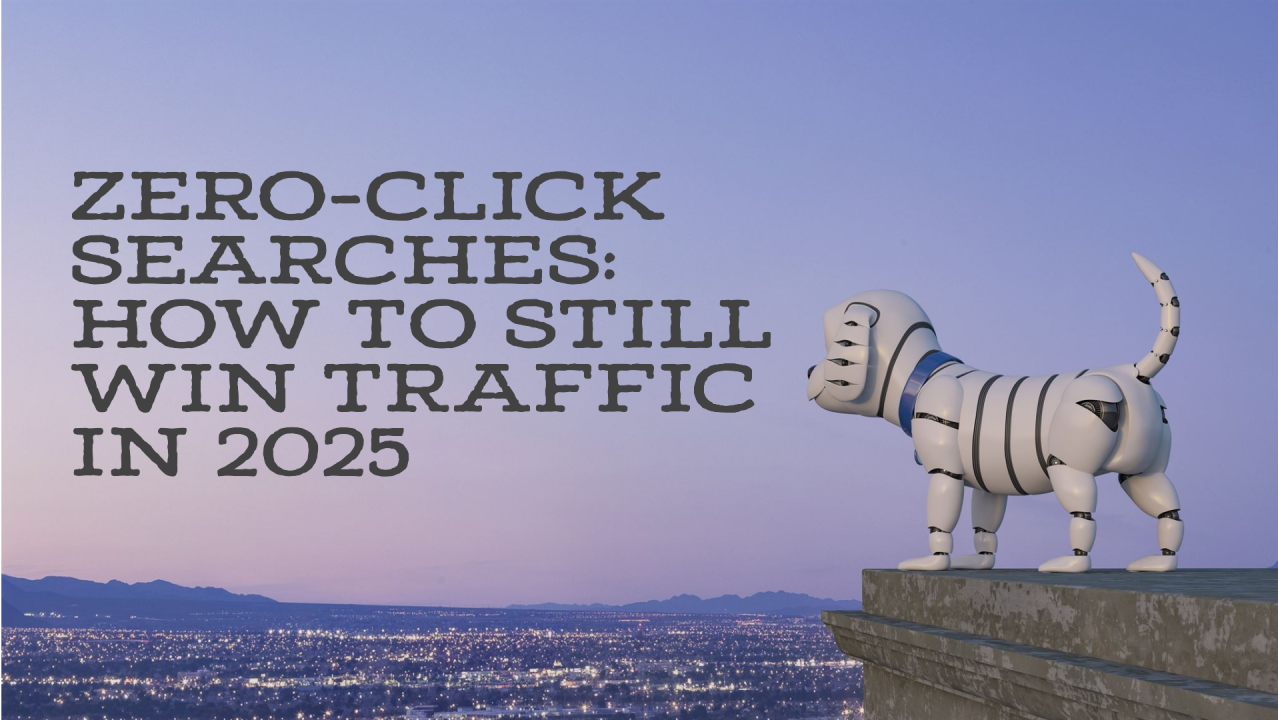
In the world of SEO, there’s a new villain: Zero-Click Searches.
By 2025, over 65% of Google searches result in no clicks. That means users are getting their answers directly from AI Overviews, Featured Snippets, or Chatbots—without visiting the actual websites providing the information.
So, what can content creators and publishers do? The answer lies in understanding how to embrace zero-click SEO by owning the summary, not the link.
What is a Zero-Click Search?
A zero-click search is a search query where the user doesn’t click on any results because their query is answered right on the search engine page.
This happens when:
- Google shows AI Overview or featured snippets
- Chatbots like ChatGPT, Bing Copilot, or Perplexity answer directly
- Quick data appears via maps, calculators, weather, or knowledge panels
In essence, the user never reaches your site.
Why Are Zero-Click Searches Growing?
Several 2024–2025 updates accelerated this trend:
- Google AI Overviews: Launched widely in mid-2024, now shown for most queries.
- ChatGPT and Perplexity popularity: Over 1 billion monthly users now ask AI instead of “Googling.”
- Voice assistants: Siri, Alexa, and Google Assistant read answers from one source only.
- Featured snippets expansion: Google now pulls summary boxes for almost 20% of queries.
These tools aim to reduce friction for the user, but they also cut out publishers from the traffic chain.
The Impact on Publishers & Bloggers
Many websites have seen:
- Traffic drops of 30–50%, especially for informational keywords
- Reduced ad revenue, as users never land on the site
- Fewer email signups or lead generation, as there’s no engagement
Example:
A health site ranking #1 for “Is fever a symptom of COVID?” saw traffic drop 48% in 6 months—Google now shows the answer directly from the page in its AI Overview.
How to Adapt Your SEO Strategy for Zero-Click SERPs
1. Target Featured Snippets Aggressively
Featured snippets are often the first answer AI engines and Google Overviews pull from.
How to win them:
- Answer questions in the first 2–3 sentences
- Use H2s and H3s with exact-match queries
- Add bulleted or numbered lists for “how-to” and “top X” queries
Example:
markdownCopyEdit## How to Reduce Zero-Click Impact
1. Win featured snippets
2. Add calls to action early
3. Track snippet visibility
2. Use Strong Internal CTAs in the Snippet Zone
Since you may only get partially cited, include a compelling reason to click right in the first 100 words.
Example:
“While most zero-click searches summarize basic answers, we’ve listed 5 in-depth strategies you won’t find in the snippet.”
3. Optimize for AI Overviews & Answer Engines (GEO + AEO)
Combine Generative Engine Optimization (GEO) and Answer Engine Optimization (AEO) to make your content:
- Easier to summarize accurately
- More likely to be quoted with attribution
- Recognized as a trusted authority source
Add:
- FAQ schema
- Author bios with credentials (E‑E‑A‑T)
- Source links with context
4. Track Your Snippet Visibility with Tools
Use tools like:
- Semrush and Ahrefs – to see which keywords trigger snippets
- SurferSEO – for optimizing paragraph-level relevance
- SparkToro – for zero-click share analysis
5. Create Complementary “Deeper Dive” Content
If your snippet gives a short answer, entice users to read the full guide:
- Add tables, tools, or calculators
- Link to video explainers or infographics
- Use strong anchors: “See full breakdown →”
Real Example: Wikipedia vs Healthline
- Wikipedia dominates zero-click space but doesn’t benefit from ads or leads.
- Healthline balances by offering short answers and actionable next steps, like symptom checkers or free guides.
This allows Healthline to benefit despite zero-click behavior.
Bonus: Add Voice-Search Optimization
AI assistants pull voice-friendly answers, so:
- Use short sentences
- Simplify jargon
- Answer “who, what, when, where, why, how” questions in plain English
The Future of SEO in a Zero-Click World
The old way of SEO—ranking for a keyword and expecting a click—is no longer reliable.
In the AI-first era, your content must:
- Be the best possible answer
- Stand out even when not clicked
- Drive brand trust and repeat visits through value
This is visibility without clicks—and it still works if you’re strategic.
Final Thoughts
Zero-click searches aren’t going away. If anything, they’re growing. But with the right approach, your content can:
- Own the featured spot
- Build authority
- Drive brand awareness and conversions—indirectly
Focus on being the most helpful answer in the AI-driven search experience, and you’ll still win—just differently.

